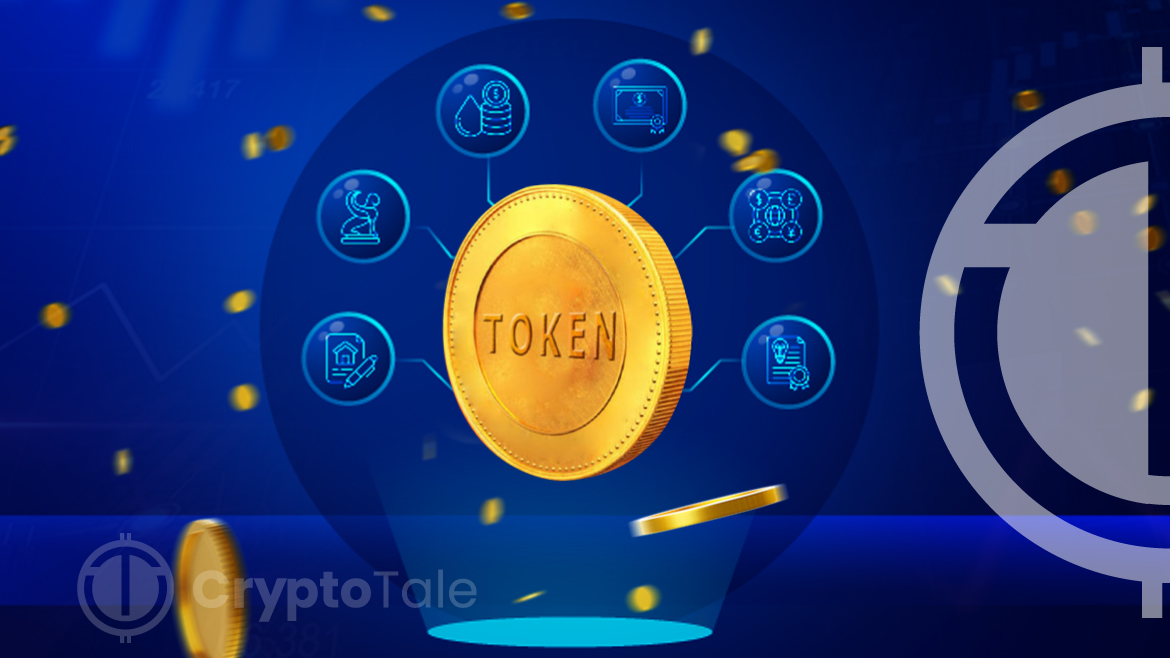
The emergence of a cutting-edge technology called tokenization is revolutionizing the financial industry, fundamentally altering the method of asset investment. By harnessing the power of blockchain technology, tokenization presents opportunities for asset ownership, investment, and exchange, transcending conventional financial models. In this article, we delve into how asset tokenization is changing the financial industry.
What is Tokenization?
Tokenization of assets refers to the process of creating a token on the blockchain; these tokens are called security tokens. These tokens are digital representatives of real-world assets like real estate, artworks, mining commodities, and financial assets (bonds, equities, stocks). Security tokens are created through a type of initial coin offering (ICO) called the security token offering (STO). In addition to STO, ICOs are capable of producing different tokens, such as payment, equity, or utility tokens. The security token can be used to represent a share in an asset, company, or in an investment fund. Additionally, they can be traded on secondary markets.
What Are the Steps Involved in Tokenization?
Acquiring Asset: Both the issuer and the asset owner have the authority to identify assets suitable for tokenization and to determine their structure. When altering the structure, factors such as regulatory requirements, ownership type, and the inherent nature of the asset must be considered.
Allocation and Safekeeping: The initial step involves appointing an overseer for the asset. Subsequently, a digital representation is generated in the shape of a blockchain token, incorporating diverse functionalities. The asset owner determines the blockchain platform, token protocols, and compliance with regulatory standards, which are then executed by the tokenization service provider. The overseer stores and safeguards the digital assets until distribution.
Distribution & Trading: Once the digital asset is created, it will be distributed to investors through various channels, including both conventional and digital avenues such as digital asset exchange platforms. Investors interested in acquiring digital assets establish accounts on these platforms to securely hold them. Distribution is a complex process involving distributors and transfer agents. Additionally, depending on the nature of the asset, there may be a possibility for an asset to be listed on secondary trading platforms like alternative trading systems (ATS).
Asset Aid: The current services of digital assets include tax, accounting reports, corporate action notifications, regulatory compliance, and Net Asset Value (NAV) calculations. Based on asset type, services vary; this is due to the need to differentiate between auditing for tokens representing fund tokens and carbon credits.
Benefits of Tokenization
Tokenization has the potential to build a more efficient financial world by solving the issues related to the creation, buying, and selling of securities.
High Liquidity
Tokenizing assets, particularly illiquid ones like art and private securities, facilitates trading with a broader range of traders on secondary markets, thereby enhancing liquidity. For example, high-value artwork often excludes small investors due to its high cost, resulting in limited liquidity. However, through tokenization, these assets can be sold on secondary markets at lower prices, consequently boosting liquidity. This benefits both investors and sellers, as investors can capitalize on a liquidity premium driven by increased trading volume of the underlying asset.
Faster and Cheaper Transaction
Tokenized asset transactions are facilitated by smart contracts, which are algorithms embedded within the blockchain. These contracts are activated upon meeting predetermined conditions, thereby executing the transaction automatically. Utilizing smart contracts automates various aspects of the exchange process, alleviating the burden associated with buying and selling tokens. Moreover, it diminishes the reliance on intermediaries, resulting in quicker transactions and reduced fees.
Transparency
A security token is embedded with the rights and legal responsibilities of its holder, along with an immutable record of ownership. This allows for transparent transactions, enabling holders to ascertain the rights they hold, who they are dealing with, and the previous owner of the token.
Accessibility
Tokenization has the potential to expand investment opportunities to a broader audience by lowering minimum investment thresholds and durations. Tokens offer high divisibility, allowing investors to acquire fractional ownership of underlying assets. Additionally, the enhanced liquidity of security tokens could shorten minimum investment periods, as investors can trade their tokens on secondary markets around the clock.
What Are the Economic Implications of Tokenization?
Employment Opportunities: Widespread adoption of tokenization can lead to increased employment opportunities in various sectors, like financial services, legal services, technology, and more.
Financial Equality: Making tokenization’s investment opportunities accessible to everyone can enhance financial inclusion and economic growth.
Boost Economic Efficiency: Tokenization can enhance economic efficiency through streamlining asset management, lowering transaction fees, and increasing liquidity.
Entrepreneurship: Tokenization allows entrepreneurs to raise funds for their startups by selling tokens representing the company’s shares and stakes. This method of fundraising offers a new avenue for startups to get capital from a large pool of investors.
What Factors Should Financial Institutions Take Into Account When Deciding To Engage in Tokenization?
Business Model: When financial institutions contemplate participation in tokenization, their pivotal decision revolves around determining the role they want to assume within this emerging landscape. For instance, institutions may opt to function as custodian banks, act as gatekeepers of tokenized assets, or fulfill other roles.
Platform Integration: Once a business model is chosen, the subsequent step involves implementing operating models aligned with it. Given that tokenization revolves around blockchain technology, selecting a platform to collaborate with becomes important. When choosing a platform, a variety of factors must be considered, including regulatory compliance requirements, the range of services provided to clients, product strategy, and more.
Regulatory Compliance: As a nascent financial institution providing asset tokenization services, adherence to diverse regulatory requirements such as KYC (Know Your Customer), AML (Anti-Money Laundering), and others are essential. Though starting from scratch is necessary for regulatory compliance, the institution can collaborate with emerging tech startups or blockchain analytics software firms to implement operational measures. This can ensure regulatory compliance when navigating the digital landscape.
Security: In the realm of cryptocurrency, numerous incidents of cyber attacks and hackers stealing millions of dollars from customers’ wallets have been reported. To mitigate this risk, financial institutions must prioritize the implementation of robust security measures. These measures should encompass security protocols deployed across multiple levels, spanning from infrastructure to various applications within the ecosystem.
Conclusion
Tokenization is revolutionizing our understanding of assets within the financial industry. It is transforming the financial landscape from exclusivity to inclusivity, democratizing access to financial assets. Moreover, asset tokenization has garnered considerable attention, driving the development of new infrastructures based on tokenization while promoting traditional players to enhance their frameworks to embrace the rising token economy.














